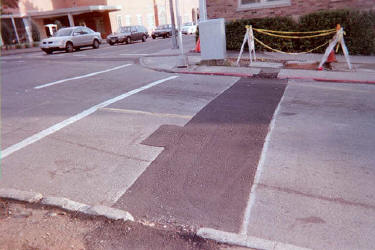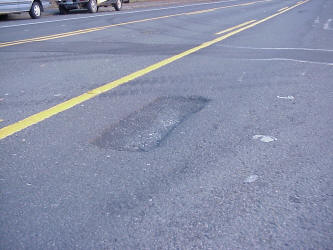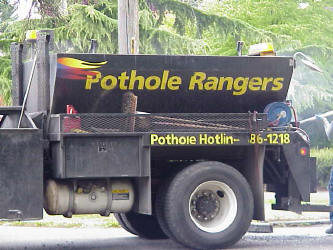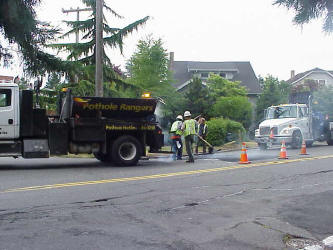Patches are a common method of treating an area of localized distress. Patches can be either full-depth where they extend from the pavement surface to the subgrade (Figure 1) or partial where they do not extend through the full depth of existing pavement (Figure 2).
Full-depth patches are necessary where the entire depth of pavement is distressed. Often times, the underlying base, subbase or subgrade material is the distresses root cause and will also need repair. Partial depth patches are used for pavement distresses like raveling, rutting, delamination and cracking where the depth of crack does not extend through the entire pavement depth.
Patching material can be just about any HMA or cold mix asphalt material as well as certain types of slurries. Typically some form of HMA is used for permanent patches, while cold mix is often used for temporary emergency repairs.
Pothole Patching
One form of patching, pothole patching, probably receives the greatest amount of public attention. Pothole patching procedures cover a wide range of methods and intentions from permanent full-depth patches to temporary partial depth patches. Two general patching procedures are described next.
Semi-Permanent Pothole Patch (Figures 3 and 4) (from FHWA, 1998[1])
- Remove all water and debris from the pothole.
- Square up the pothole sides so they are vertical and have in-tact pavement on all sides.
- Place the patching material into the clean squared-up hole. The material should mound in the center and taper down to the edges so that it meets flush with the surrounding pavement edges.
- Compact the patching material starting in the center and working out toward the edges. Compaction can be accomplished using a vibratory plate compactor or a single-drum vibratory roller. Check the compacted patching material for a slight crown. This is done so that subsequent traffic loading will compact it down to the surrounding pavement height.
Throw-and-roll (from FHWA, 1998[1])
- Place the patching material into the pothole without any preparation or water/debris removal.
- Compact the patching material using the patching truck tires (usually 4 to 8 passes).
- Check the compacted patch for a slight crown. If a depression is present add more patching material and compact.
Although it may seem that the semi-permanent technique would produce a higher quality patch than the throw-and-roll technique, the FHWA’s Long Term Pavement Performance (LTPP) Study found that the “throw-and-roll technique proved just as effective as the semi-permanent procedure for those materials for which the two procedures were compared directly” (FHWA, 1998[1]). Since the semi-permanent technique is more labor and material intensive, the throw-and-roll technique will generally prove more cost effective if quality materials are used.
- Federal Highway Administration (FHWA). (June 1998). Long-Term Monitoring of Pavement Maintenance Materials Test Sites, Publication No. FHWA-RD-98-073. Office of Engineering Research and Development, Federal Highway Administration. McLean, VA.↵




